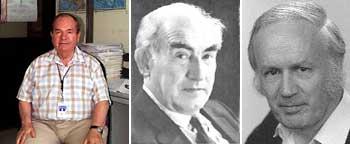Superconductivity and superfluidity at the Nobel Prize in Physics

According to the theory of superconductivity, certain materials can conduct electricity without resistance at temperatures close to absolute zero.
The Nobel Prize in Physics was awarded for the theory that explains this phenomenon, John Bardeen, Leon N. To physicists Cooper and Robert Schrieffer in 1972. However, this theory does not pose all types of superconductivity, there are materials that do not fully conduct magnetism when they become superconductors, so an additional explanation was needed to understand this behavior.
The new theory was developed by Abrikosov from another simple theory proposed by Ginzburg. For these works they will receive the Nobel Prize this year.
For his part, the English Leggett will receive a third of the prize for developing the theory of superfluidity. This theory explains why some liquids lose viscosity at the absolute zero temperature. This is the case of helium.
The Nobel Foundation has wanted to link physics with the Nobel Prize in Medicine, since today the magnetic resonance device needs liquid helium, superole and superfluous.
Buletina
Bidali zure helbide elektronikoa eta jaso asteroko buletina zure sarrera-ontzian











